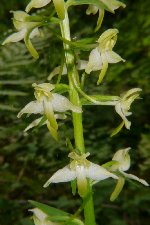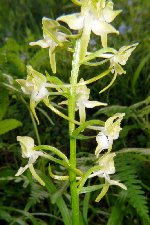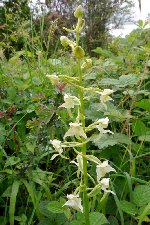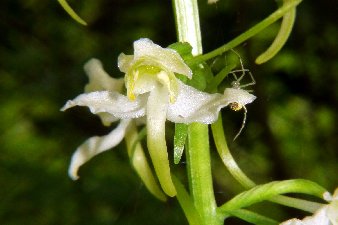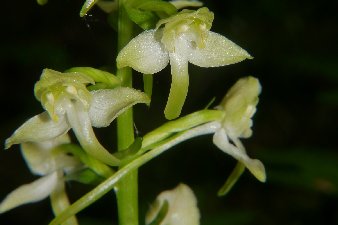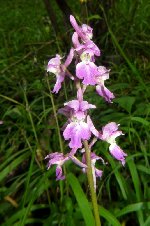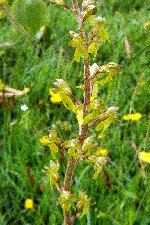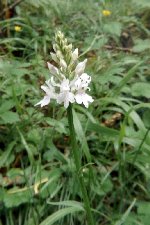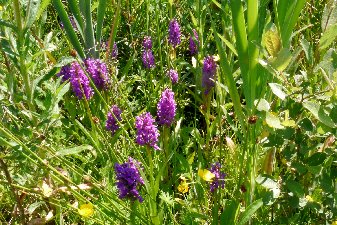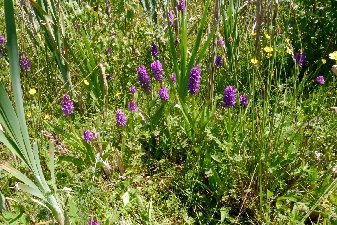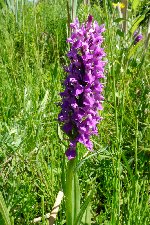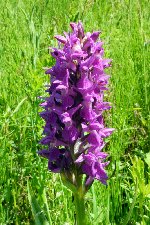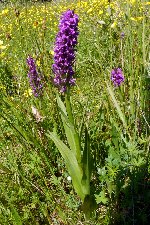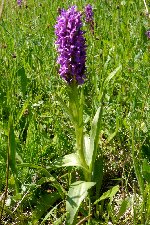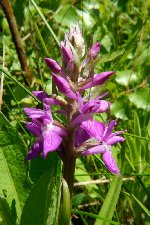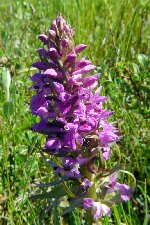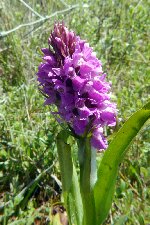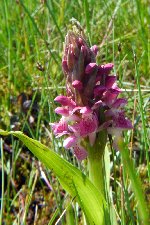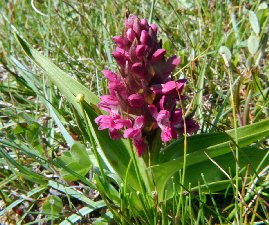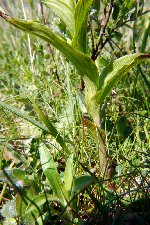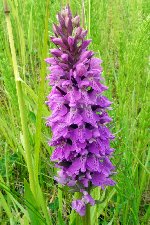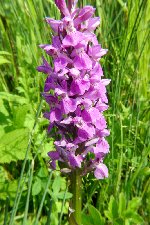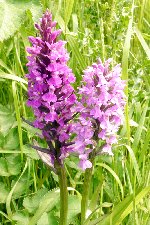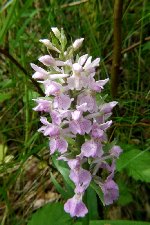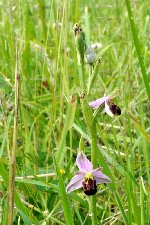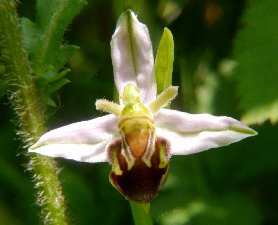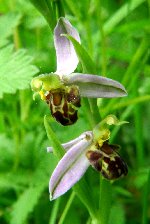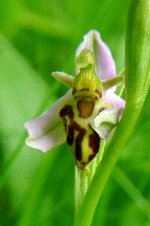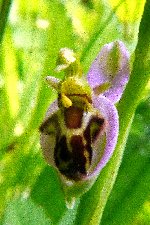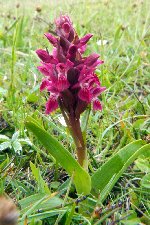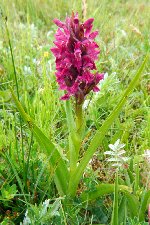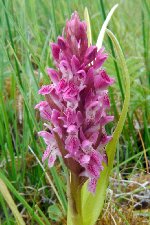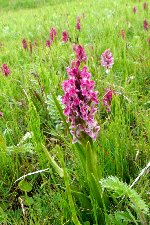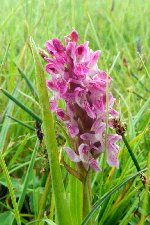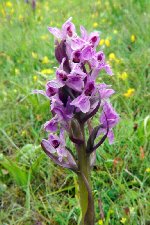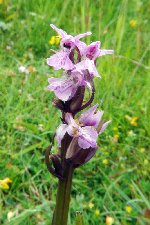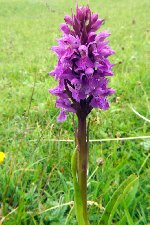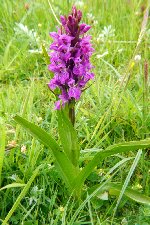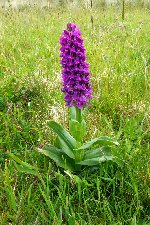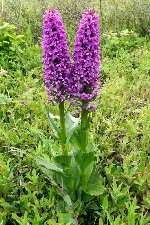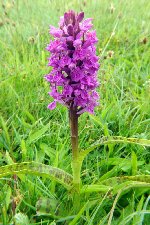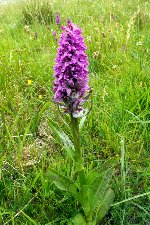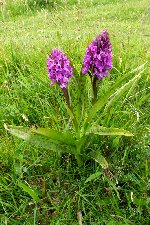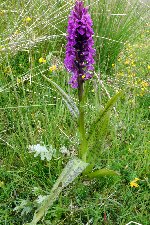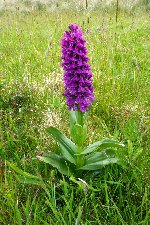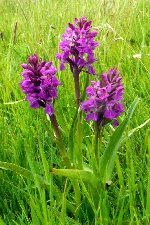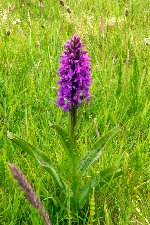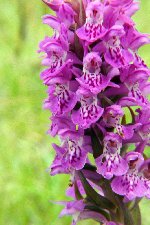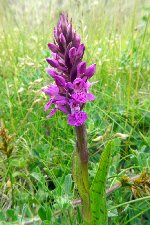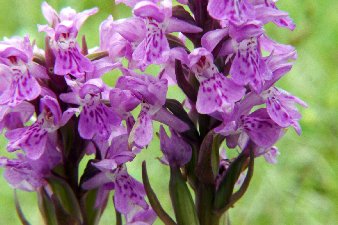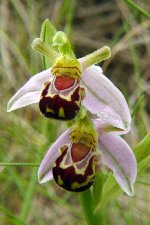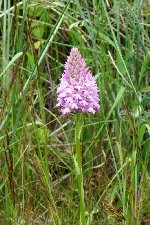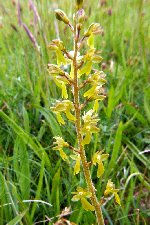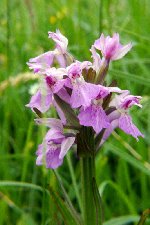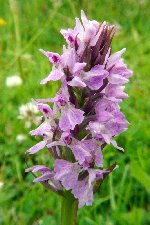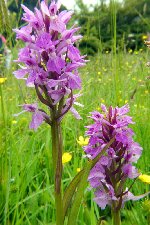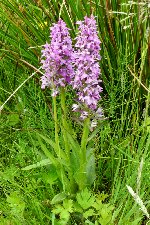|
|
|||||||||||||||||
|
|
|||||||||||||||||
 |
|
Llynllys, 2nd June 2018 (SJ 27352 23565) We were here a couple of weeks later in 2017, and found a nice location for Greater Butterfly Orchids; they were on their way out though. So this year we catch them in their prime. They first time we called here, way back in 2011, we found this species entirely by chance. Where we saw them now is quite overgrown, so if they still grow there they are lst in undergrowth. Now, not far from that spot, there are some hundred or more plants in flower spread over a wide area, mainly under shade, but some in a more open position. Some were over 30 cm in height, and all stood out so well in the gloom. Fantastic! Also seen are some late flowering Early Purple Orchids with seemingly larger than normal flowers, Common Twayblades with colourful ovaries, and the odd Common Spotted Orchid coming into flower. Haskayne Cutting 3rd June 2018 (SD 35685 08848) Our first visit here in 2017 was in early July, and the contrast couldn't be more dramatic. Then we saw some large Early Marsh Orchids going over, and a few spikes with seeds developing from another Dactylorhiza. Now the Early Marsh are nowhere to be seen, and there are some 3,000 Southern Marsh Orchids - incorrectly identified as Northern Marsh on a Hardy Orchid Society post. This error is understandable, because they are such a deep purple colour; not the usual washed-out colours associated with Southern Marsh. A look at the lips reveals the SMO shape and patterning with none of the bold bright magenta blotching of the NMO. There are some quite robust and tall plants suggesting that they may be hybrids, but the plants with flowers more suggestive of hybridisation (D. incarnata x praetermissa) are typically sized with rather lax flowered spikes. Ainsdale Dunes 3rd June 2018 (SD 29478 12244) Once again we are really too early to really see what these dunes have to offer. Last year we travelled their by rail, and after the trek from the station to the coast and then across to the dunes we were in need of a rest already! It was a hot day. Consequently we didn't cover as much of the dunes as we should have, bearing in mind we had to return. This time we paid to park on the beach, and drove down to where the dunes started. RSPB Burton Mere 4th June 2018 (SJ 31426 73496) We have usually been here previously to see the Bee Orchids, but this year we are a little earlier. There are some along the path in bud, one in flower in front of a bird hide and some better examples out of reach below and to the left of the visitor centre. But this year we get a great display of the Southern Marsh Orchids; must be a few hundred along or close by the footpaths. There are three closish together that are almost pink in colour, whilst the others are very nice shades of purple - definitely not as deeply coloured as those at Haskayne. Freeman's Copse 4th June 2018 (SJ 41052 76229) I approached this site with a degree of trepidation. We usually park near the Boat Museum and enjoy the walk along the canal. This time though, someone had been busy with a strimmer, with vegetation on either side of the towpath severely strimmed. All was okay though. The Bee Orchids are growing well away from the path and the colony is seemingly unharmed. Actually, the surrounding vegetation is quite high, and the flowers are only just poking through. Some have been nibbled, possibly by snails or slugs, while the aberrations are still here - lacking shoulder bumps, var belgarum style, but boasting asymmetrical lip patterning. The first time here the Bee orchids could be found in a glade in the trees, but again this year there are none to be found. Ynys Las 8th June 2018 (SN 60948 94102) Has it really been five years since our last visit? Well, it was rather disappointing in 2013, with few orchids and much overgrown. Notices said as much, and the response was over-winter grazing by horses. It seems to have worked, as it really does look like the glory days of Ynys Las have returned.
Where the ground is just a tad higher, and therefore a tad dryer are loads of Southern Marsh Orchids, some looking decidedly `Leopardy' though these are perhaps in part hybrids as that taxon is said to be undersized and loose-flowered. They do have large marked open spots in the leaves, and there is a continuum from smaller examples to large `butch' versions.
On the less fluffy side of orchid identification we come across some Common Twayblades in the slacks and a single Bee Orchid in a precarious position in the dunes. Neston Old Quay 8th June 2018 (SJ 28861 76946) Perhaps over 200 Southern Marsh Orchids grow in this field, down in the damper areas where the rushes grow. While other nearby colonies at Burton and Gowy are home to rather deeply coloured SMOs, those here are paler and more like those I have seen elsewhere. Is the soil here deficient in a vital nutrient, or have these arisen independently to those other two colonies? There is one aberrant plant, with deformed flowers on a rather lax flower spike. We want to continue the walk down to the actual old quay, but this field is also home to a quartet of rather frisky horses who have positioned themselves by that gate. They know!
|
|
|
||||||||||||||||||||
